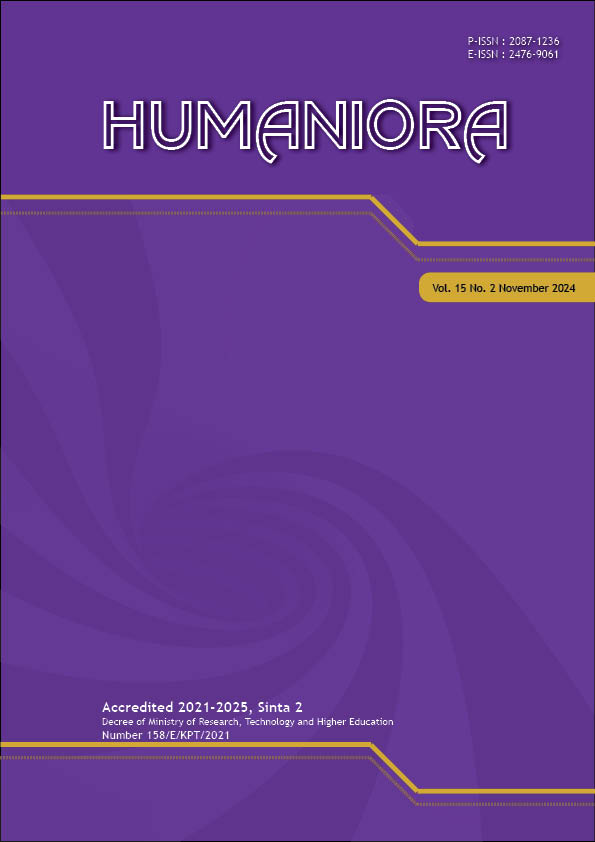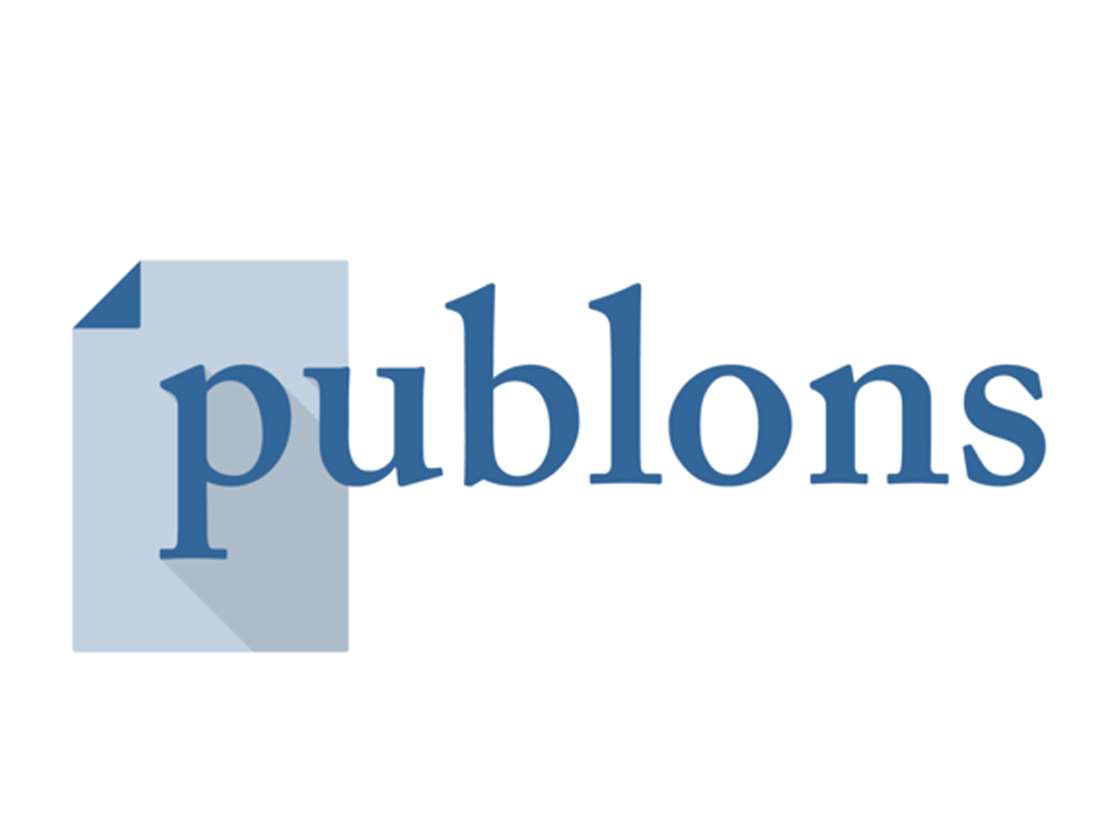Community-Based Tourism Development and Commodificiation in Sarugo Tourism Village
DOI:
https://doi.org/10.21512/humaniora.v15i2.12043Keywords:
community-based tourism, commodification, cultural tourism, Sarugo villageAbstract
The research objective was to explore the intersection of culture and tourism in Sarugo Village, West Sumatra. Specifically, the research aimed to elucidate this integration’s positive and negative impacts on the local culture to ensure cultural survival. The research sought to understand how cultural values were transformed into tourism products and services. The research employed an ethnographic approach, utilizing data collection methods such as observation and in-depth interviews with 15 participants. The research focused on the local community’s management of traditional houses, like Rumah Gonjong, which were transformed into homestays to accommodate overnight guests. The research results indicate that cultural aspects, crucial elements in the lives of people in Sarugo Village, are modified into tourism products. Specifically, Rumah Gonjong has been transformed into a homestay, demonstrating how the private sphere is converted into a public sphere within the tourism industry. This transformation has led to an economic increase for the local community, as the managers of the Rumah Gonjong now provide additional income. Consequently, the Rumah Gonjong is maintained, and the tourism industry’s consequences contribute to the cultural survival of the Sarugo Village community. Integrating culture and tourism in Sarugo Village highlights potential benefits and challenges, showcasing how sustainable tourism practices can preserve and promote local traditions.
Plum Analytics
References
Achmad, F., & Wiratmadja, I. I. (2024). Strategic advancements in tourism development in Indonesia: Assessing the impact of facilities and services using the PLS-SEM approach. Journal Industrial Servicess (JISS), 10(1), 49-62.
Afrizal. (2014). Metode penelitian kualitatif (Sebuah upaya mendukung penelitian kualitatif dalam berbagai disiplin ilmu). PT. Raja Grafindo Persada.
Ahimsa-Putra, H. S. (2022). Etnosains, etnoekologi, dan etnoteknologi antropologi mengungkap kearifan lokal. Kepel Press.
Aprilia, & Muzan, A. (2023). Pemanfaatan media digital untuk promosi wisata Kampung Saribu Gonjong. Journal of Sharia and Law, 2(2), 660-675.
Baloch, Q. B., Shah, S. N., Iqbal, N., Sheeraz, M., Asadullah, M., Mahar, S., & Khan, A. U. (2023). Impact of tourism development upon environmental sustainability: A suggested framework for sustainable ecotourism. Environmental Science and Pollution Research, 30(3), 5917-5930. https://doi.org/10.1007/s11356-022-22496-w
Badan Pusat Statistik Provinsi Sumatera Barat. (2023, February 28). Sumatera Barat dalam angka 2023. https://sumbar.bps.go.id/id/ publication/2023/02/28/873d22882726e76b9d86b105/provinsi-sumatera-barat-dalam-angka-2023.html
Cárdenas-GarcÃa, P. J., & Alcalá-Ordoñez, A. (2023). Tourism and development: The impact of sustainability—Comparative case analysis. Sustainability, 15(2), 1-10. https://doi.org/10.3390/su15021310
Creswell, J. W. (2014). Research design: Qualitative, quantitative, and mixed methods approaches (4th Ed.). SAGE Publications.
Ermayanti, E., Indrizal, E., & Irwandi, A. (2023a). Rural tourism development: Rumah Gadang as a homestay in traditional village of Nagari Sijunjung a commodification. Jurnal Antropologi: Isu-Isu Sosial Budaya, 25(1), 34-49. https://doi.org/10.25077/jantro.v25.n1.p34-49.2023.
Ermayanti, E., Indrizal, E., & Irwandi, A. (2023b). transformation of Rumah Gadang into homestasy in traditional village of Nagari Sijunjung. Indonesian Journal of Tourism and Leisure, 4(2), 97-107. https://doi.org/10.36256/ijtl.v4i2.315.
Ermayanti, E., Indrizal, E., Irwandi, A., Erwin, & Anwar, H. (2024). Commodification: Rural Tourism development in traditional village of Nagari Sijunjung. MIMBAR: Jurnal Sosial dan Pembangunan, 40(1), 9-16. https://doi.org/10.29313/mimbar.vi.2052.
Ermayanti, E., Nurti, Y., Indrizal, E., & Irwandi, A. (2023). Transformasi gender pada pembangunan pariwisata berbasis masyarakat di Perkampungan Adat Nagari Sijunjung. Jurnal Ilmu Sosial Dan Humaniora, 12(3), 508-517. https://doi.org/10.23887/jish.v12i3.66871.
Ermayanti, Indrizal, E., Nurti, Y., & Irwandi, A. (2022). Museum hidup: Perkampungan Adat Nagari Sijunjung dalam kancah industri pariwisata. Jurnal Ilmiah Universitas Batanghari Jambi, 22(3), 1950-1957. https://doi.org/10.33087/jiubj.v22i3.2834.
Gocer, O., Boyacioglu, D., Karahan, E. E., & Shrestha, P. (2024). Cultural tourism and rural community resilience: A framework and its application. Journal of Rural Studies, 107, 1-15. https://doi.org/10.1016/j.jrurstud.2024.103238.
Hutnaleontina, P. N., Bendesa, I. K. G., & Yasa, I. G. W. M. (2022). Correlation of community-based tourism with sustainable development to improve community welfare: A review. International Journal of Applied Sciences in Tourism and Events, 6(2), 183-193. https://doi.org/10.31940/ijaste.v6i2.183-193.
Ikhlas. (2021). Komodifikasi wisata adat (Studi kasus Kampung Sarugo Jorong Sungai Dadok Nagari Koto Tinggi Kecamatan Gunuang Omeh Kabupaten Limapuluh Kota) [Skripsi, Universitas Andalas]. http://scholar.unand.ac.id/96043/
Irwandi, A., & Ermayanti, E. (2023). Lorong waktu budaya Minangkabau: Sinergi budaya dan pariwisata di Perkampungan Adat Nagari Sijunjung. Kaganga: Jurnal Pendidikan Sejarah Dan Riset Sosial Humaniora, 6(1), 98-116.
Jaya, P. H. I., Izudin, A., & Rahadiyand. (2022). New age of Indonesian local tourism development: Community bonding, youth work, and selling tourism. Komunitas: International Journal of Indonesian Society and Culture, 14(2), 157-171. https://doi.org/10.15294/komunitas.v14i2.35915.
Karmala, S. F. (2021). Studi kelayakan Jorong Sungai Dadok Kenagarian Koto Tinggi Kecamatan Gunuang Omeh sebagai wisata budaya [Tesis, Universitas Negeri Padang]. http://repository.unp.ac.id/34084/
Kartika, N., Dienaputra, Reiza. D., Machdalena, S., & Nugraha, A. (2022). Cultural based tourism in Cirebon: A study commodification in cultural tourism. Sosiohumaniora: Jurnal Ilmu-Ilmu Sosial Dan Humaniora, 24(3), 362-370. https://doi.org/10.24198/sosiohumaniora.v24i3.33432.
Khatima, G. (2022). Strategi pemerintah Nagari dalam pengembangan Desa Wisata Kampuang Sarugo di Nagari Koto Tinggi Kecamatan Gunuang Omeh Kabupaten Limapuluh Kota Provinsi Sumatera Barat [Diploma thesis, Institut Pemerintahan Dalam Negeri]. http://eprints.ipdn.ac.id/6999/
Li, M. (2022). Correlation degree analysis of tourism and economic growth based on computable general equilibrium model. Journal of Mathematics, 2022, 1-12. https://doi.org/10.1155/2022/4275698.
Maulana, F., & Agustina, I. H. (2022). Identifikasi pola ruang Kampung Sarugo Jorong Sungai Dadok Nagari Koto Tinggi Kabupaten Limapuluh Kota. In Bandung Conference Series: Urban & Regional Planning (Vol. 2, No. 2, pp. 616-625).
Mawarni, A. A., & Puspitasari, P. (2020). Optimizing religious tourism as tourism attractions for cultural resilience (A case study of religious tourism in Pangeran Jayakarta Sanctuary). Journal of of Strategic and Global Studies, 3(2). https://doi.org/10.7454/jsgs.v3i2.1034
MuÅ¡tra, V., Perić, B. Å ., & PivÄević, S. (2023). Cultural heritage sites, tourism and regional economic resilience. Papers in Regional Science, 102(3), 465-483. https://doi.org/10.1111/pirs.12731
Nandasena, R., Morrison, A. M., & Coca-Stefaniak, J. A. (2022). Transformational tourism – A systematic literature review and research agenda. Journal of Tourism Futures, 8(3), 282-297. https://doi.org/10.1108/JTF-02-2022-0038.
Nurhadi, I., Sumarti, T., Dharmawan, A. H., & Damanhuri, D. S. (2022). Cultural commodification and ethical transition of tourism development: A case in Osing Community, Indonesia. Sodality: Jurnal Sosiologi Pedesaan, 10(1), 24-43. https://doi.org/10.22500/10202238564.
Prakoso, A. A. (2022). Transformasi desa wisata. CV Pena Persada.
Prasiasa, D. P. O., Widari, D. A. D. S., & Susanti, P. H. (2023). Authenticity and commodification of creative industry products in the tourism sector, Bali. Mudra Jurnal Seni Budaya, 38(3), 234-244. https://doi.org/10.31091/mudra.v38i3.2285.
Pratiwi, M. A., & Wikantiyoso, R. (2022). Local wisdom as cultural resilience on tourism activities (Case study: Penglipuran Bali Traditional Village). Local Wisdom: Jurnal Ilmiah Kajian Kearifan Lokal, 14(1), 95-105. https://doi.org/10.26905/lw.v14i2.6857.
Pung, J. M., Gnoth, J., & Del Chiappa, G. (2020). Tourist transformation: Towards a conceptual model. Annals of Tourism Research, 81. https://doi.org/10.1016/j.annals.2020.102885
Rahmadani, T. S. (2022). Komunikasi pariwisata Kampung Wisata Sarugo (Saribu Gonjong) sebagai kawasan smart branding Kabupaten Lima Puluh Kota [Skripsi, Universitas Andalas]. http://scholar.unand.ac.id/100975/
Richards, G. (2021). Rethinking cultural tourism. Edward Elgar Publishing. https://doi.org/10.4337/9781789905441.
Ritonga, R. M. (2019). Pengembangan wisata warisan budaya sebagai daya tarik Kota Tangerang cultural heritage tourism development as tourist attraction in Tangerang. Media Bina Ilmiah, 14(3), 2249-2258. https://doi.org/10.33758/mbi.v14i3.329.
Salam, N. E., & Aini, L. N. (2022). Destination branding kampung Wisata Sarugo oleh kelompok sadar wisata di Kabupaten Lima Puluh Kota. JOM FISIP, 9(2), 1-14.
Simanungkalit, V. B., Sari, D. A., Teguh, F., Ristanto, H., & Permanasari, I. K. (2016). Buku panduan pengembangan desa wisata hijau. Asisten Deputi Urusan Ketenagalistrikan dan Aneka Usaha Kementerian Koperasi dan UKM Republik Indonesia.
Spradley, J. P. (2006). Metode etnografi. Tiara Wacana.
Tou, H. J., Noer, M., & Helmi. (2022). Sustainable pilar of rural tourism development. Jurnal Rekayasa, 12(1), 47-58. https://doi.org/10.37037/jrftsp.v12i1.129
Yuliani, R., & Abdi, M. (2021). Faktor-faktor yang mempengaruhi pengembangan Kampung Saribu Rumah Gonjong. Menara Ilmu: Jurnal Penelitian dan Kajian Ilmiah, 15(2), 85-92.
Yuliani, R., & Abdi, M. (2022). Strategi Pengembangan penginapan lokal (homestay) untuk mendukung Desa Wisata Kampung Saribu Gonjong Kabupaten Lima Puluh Kota. Menara Ilmu: Jurnal Penelitian dan Kajian Ilmiah, 16(2), 72-77.
Downloads
Published
How to Cite
Issue
Section
License
Copyright (c) 2024 Ermayanti, Fajri Rahman, Ade Irwandi

This work is licensed under a Creative Commons Attribution-ShareAlike 4.0 International License.
Authors who publish with this journal agree to the following terms:
a. Authors retain copyright and grant the journal right of first publication with the work simultaneously licensed under a Creative Commons Attribution License - Share Alike that allows others to share the work with an acknowledgment of the work's authorship and initial publication in this journal.
b. Authors are able to enter into separate, additional contractual arrangements for the non-exclusive distribution of the journal's published version of the work (e.g., post it to an institutional repository or publish it in a book), with an acknowledgment of its initial publication in this journal.
c. Authors are permitted and encouraged to post their work online (e.g., in institutional repositories or on their website) prior to and during the submission process, as it can lead to productive exchanges, as well as earlier and greater citation of published work.
USER RIGHTS
All articles published Open Access will be immediately and permanently free for everyone to read and download. We are continuously working with our author communities to select the best choice of license options, currently being defined for this journal as follows: Creative Commons Attribution-Share Alike (CC BY-SA)
























